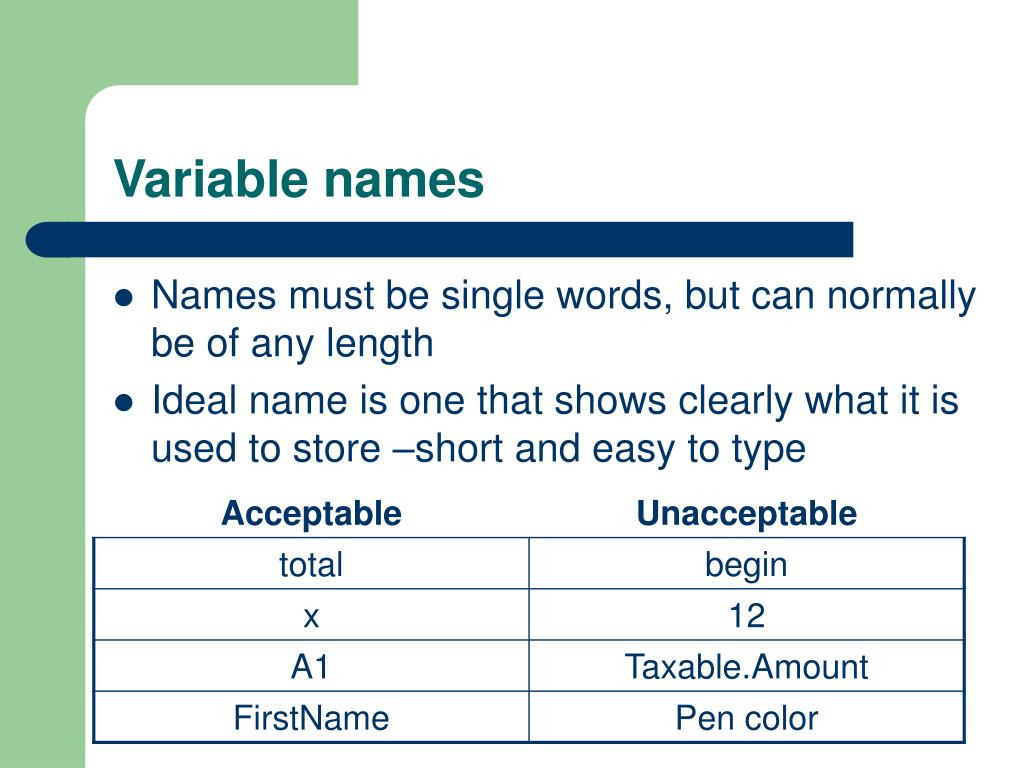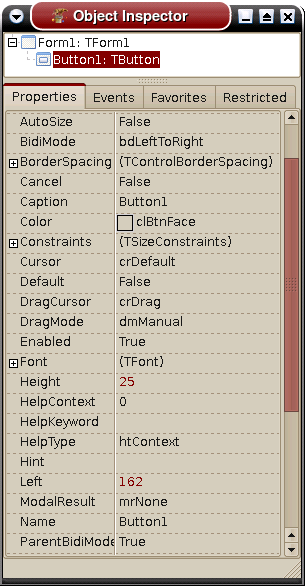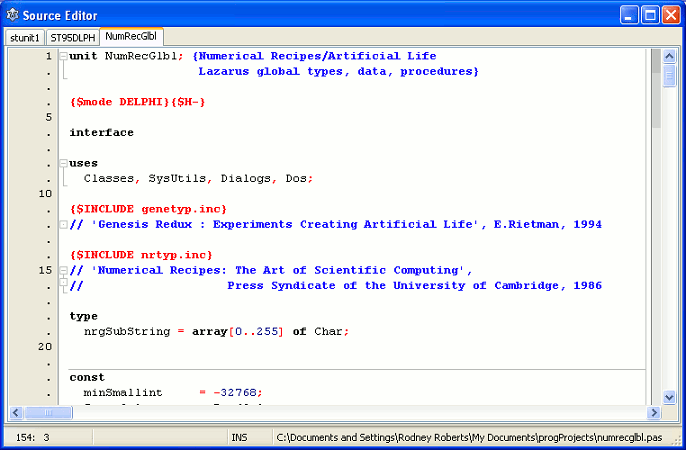

You can actually change the default behavior, asking for a larger representation, by using the $Z compiler directive. There is also a 32-bit representation, which might be useful for compatibility with C or C++ libraries. By default, Delphi uses an 8-bit representation, unless there are more than 256 different values, in which case it uses the 16-bit representation. Note: Enumerated types can have different internal representations. When you apply the Ord function to a value of an enumerated type, you get this zero-based value. Here are some examples:Įach value in the list has an associated ordinality, starting with zero. In other words, an enumeration is a list of values. Instead of indicating a range of an existing type, in an enumeration you list all of the possible values for the type. The same holds true for other run-time checking options, such as overflow and stack checking.Įnumerated types constitute another user-defined ordinal type. However, the difference is really small, and for this reason I suggest you to leave all these run-time checks turned on, even in a shipping program. You can eventually disable the option for the final build of the program, to make it a little faster. Note: I suggest that you turn on this compiler option while you are developing a program, so it'll be more robust and easier to debug, as in case of errors you'll get an explicit message and not an undetermined behavior. At run-time, if you have enabled the Range Checking compiler option (in the Compiler page of the Project Options dialog box), you’ll get a Range check error message.
#Free pascal define type code
Writing the code above results in a compile-time error, "Constant expression violates subrange bounds." If you write the following code instead:ĭelphi will compile it. When you have defined a subrange, you can legally assign it a value within that range. The original type must be an ordinal type, and the resulting type will be another ordinal type. You just need to supply two constants of that type. In the definition of a subrange, you don’t need to specify the name of the base type. You can define a subrange of the Integer type, from 1 to 10 or from 100 to 1000, or you can define a subrange of the Char type, as in: Finally, I’ll show some Delphi examples and introduce some tools that will allow you to access type information dynamically.Ī subrange type defines a range of values within the range of another type (hence the name subrange).

I’ll also try to underline the differences from the same constructs in other programming languages, so you might be interested in reading the following sections even if you are familiar with kind of type definitions exemplified above. Get used to defining a data type each time you need a variable with a complicated structure, and you won’t regret the time you’ve spent in it.īut what do these type definitions mean? I’ll provide some descriptions for those who are not familiar with Pascal type constructs. Two variables of two identical types are still not compatible, unless their types have exactly the same name, and unnamed types are given internal names by the compiler. The type compatibility rules of Pascal, in fact, are based on type names, not on the actual definition of the types. Note: In general, you should avoid using unnamed types as in the code above, because you cannot pass them as parameters to routines or declare other variables of the same type. Similar type-definition constructs can be used directly to define a variable without an explicit type name, as in the following code:ĭecemberTemperature: array of Byte

When you give a name to a type, you must provide a specific section in the code, such as the following:Ĭolors = (Red, Yellow, Green, Cyan, Blue, Violet) These types can be given a name for later use or applied to a variable directly. There are still few languages with so many mechanisms to define new types. If you think that type constructors are common in many programming languages, you are right, but Pascal was the first language to introduce the idea in a formal and very precise way. The most important user-defined data type is the class, which is part of the object-oriented extensions of Object Pascal, not covered in this book. Programmers can define their own data types by means of type constructors, such as subrange types, array types, record types, enumerated types, pointer types, and set types. The cover of the 4th edition of Essential Pascal,Īlong with the notion of type, one of the great ideas introduced by the Pascal language is the ability to define new data types in a program.


 0 kommentar(er)
0 kommentar(er)
